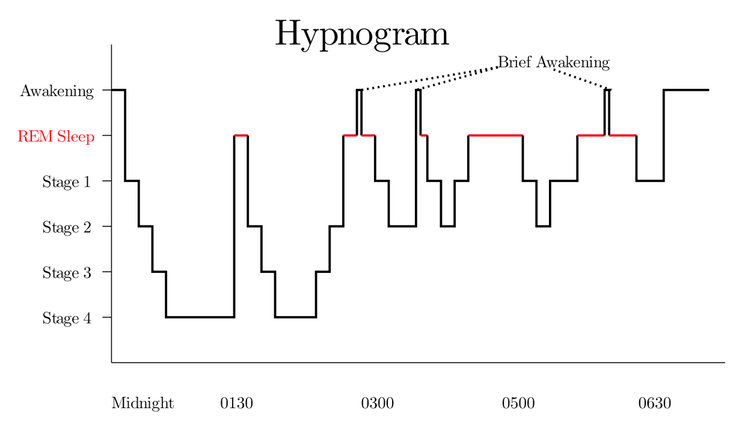Procrastination can be perceived as a sign of perfection, or the assassin of opportunity. We all put things off from time to time, but if you find yourself doing so more often than not then you might just be a chronic procrastinator. Whether you feel held back by anxiety, perfectionism, or boredom, procrastinating can have negative impacts on all areas of life.
It can inhibit your growth, stop you from progressing at work, and dent your self-confidence when dealing with others.
However, it’s entirely possible to overcome the tendency to procrastinate, and we’ll show you how. In this article, we’ll explain how to understand and implement a 2-minute rule that will help you become more productive. We’ll also explain the underlying psychology of procrastination, helping you understand why you sometimes get stuck in a rut.
We’ll offer some extra tips to help you get the best out of your time.
What Is Procrastination?

First, let’s get really clear on what procrastinating is and what it involves. On the most basic definition, procrastination involves putting something off without a particularly good reason.
This might be in personal or professional life, and it occurs even when the thing you’re putting off is important. Procrastination examples include reading your social media feed instead of completing a work project, sorting out something minor in the home instead of engaging with another person, or playing games when you know you need to do a chore.
Crucially, putting something off for a good reason isn’t procrastinating. For example, delaying something to go to a family emergency isn’t procrastination, and nor is it taking time to prioritize self-care.
The vital ingredient in procrastination is a kind cognitive dissonance – you want to do the thing, or know you should do it, and yet you find ways to avoid it.
Why Do We Procrastinate?

Now, if you’re like most people then you’ve probably procrastinated a lot – in fact, you might even have done so in the last day, or even in the last hour.
But why do we do this? Experts in psychology say that a range of factors may be salient. For example, for some us there’s an underlying perfectionism – we worry we won’t be able to do a good job.
When we worry about not doing a good job we tend to hold back on trying at all. This is a kind of self-sabotage that ensures we don’t do our best work, but that gives us a reason to pin this on – after all, we left the project too late.
For others, there’s an underestimation of how much work or attention something needs, or there’s a belief that we need to be exactly in the right frame of mind in order to engage with a particular task.
But let’s dig a bit deeper into some of the psychology of procrastination.
The Psychology Of Procrastinating

Research shows that when we procrastinate, we tell ourselves stories to make sense of our behavior and rationalize it.
In other words, we make ourselves believe that what we’ve done was okay, or inevitable, which can hold us back from making positive changes in the future.
For example, one study conducted on a group of students revealed a range of beliefs in the psychology of procrastinators.
Many of them reported that they didn’t know what to do or didn’t know how to do it, effectively placing the blame elsewhere.
Meanwhile, lots of the participants also indicated a genuine belief that they worked under pressure – they were in the habit of last-minute contemplation, and thought it served them well.
Yet more reported not caring about what they were doing or the results of failing to do it, suggesting that procrastination is sometimes associated with committing to things we don’t really want to do.
Far more common than not being invested, however, is getting caught up in worries about not being good enough. When we think there’s nothing we can do to live up to our expectations or the expectations of others, we stop ourselves from engaging entirely.
What Are The Effects Of Procrastinating

While the above research largely concerned students, procrastination impacts us at all stages of our lives. In fact, some studies estimate that around 20% of adults in America qualify as chronic procrastinators – and this can have profoundly negative effects.
Mental health is one particularly important area that can suffer if you procrastinate a lot of the time. For example, some of the latest work of procrastination indicates that those who identify themselves as procrastinators sometimes feel relieved and less stressed.
At the start of a period of procrastination but ultimately end up much more stressed than their peers. Chronic procrastinators also report a higher rate of illness, though whether there’s a direct causal relationship here remains mysterious.
Procrastinating damages work relationships, it means that others take more work to compensate for your failure to complete tasks. This might be at home (e.g., with chores) or with work projects.
Perhaps more importantly of all, procrastination stops you from realizing your full potential. If you put everything off until the last moment, you never know how good you could be, what your full value is, and what your true purpose might be.
How Do I Overcome Procrastination

So, now you should have a more robust understanding of procrastination.
You now know what procrastinating is, where it comes from, how it can change your life and inhibit your success.
Let’s now turn our attention to the task of overcoming procrastination for good!
In this section, we’ll offer four tips that you can use to limit future procrastination, and then we’ll move on to a 2-minute rule that can revolutionize the way you think about tasks (both at work and at home).
Make Micro Commitments

Micro commitments are small, manageable commitments rather than intimidating large ones.
Often, you can break a large goal into small micro-commitments, thereby ensuring that the whole project gets completed.
For example, suppose you need to give a series of ten presentations at work. Try making a micro commitment to completing one this week, and then recommit to the next one the following week.
In addition, when you’re trying to beat procrastination, it’s smart to make the micro-commitments things that you’ll be held accountable for doing.
In other words, pick things that you absolutely have to do, such as time-limited events. It will be harder to back out of these or make excuses.
Stop Wasting Time

You might well think “If it was so easy to just stop wasting time, I’d have done it already.”
After all, most procrastinators are well aware of their habit, and of the fact they waste time. However, what you might not yet have tried are concrete strategies to stop wasting time.
One way is to schedule your day into chunks, assigning a task (or part of a task) to each. For example, the Pomodoro technique involves working for a 25-30 minute, then taking a five-minute break. This can help to keep you focused, and gives you a guarantee that a break is coming up soon.
Positive affirmations can also stop you from wasting time. Try repeating things like “I will use my time-wise today” when you wake up today. Meanwhile, accountability can help too. Perhaps you might make a pact with a procrastinating friend, and agree to report back on your productivity.
Reward Yourself Often

Overcoming procrastinating shouldn’t be focusing on times you’ve wasted or ways in which you feel bad about the past.
Try to link your new good habits with positivity by deliberately rewarding yourself for improving. Decide what your reward will be for each task you’ve undertaken, use this as an incentive to get through it.
This also helps to form new neural pathways in your brain, associating these tasks with pleasure and reward.
Note, too, that a reward doesn’t have to be big. It can be treating yourself to food, listening to your favorite song, calling a friend or watching something on YouTube.
It can help to associate bigger rewards with more overwhelming tasks, so try to think of something more substantive to reward yourself with when you do something like complete a huge work project, clean the whole house or do your taxes.
Stop Getting Distracted Easily

Finally, distractions are everywhere and they’re hard to resist.
They support procrastination, making it incredibly easy to go off-task and forget what you were supposed to be doing.
However, you have some power over distractions and their role in your life. Consider your phone, for example – you can put it in another room or turn it off until you are done.
There are features you can use that lock certain features of your phone until a set time has passed.
When it comes to the distraction of social media, it’s also worth asking you whether it’s playing a positive role in your life or whether you could stand to take a break. If social media is a source of envy and loneliness for you, you might as well break ties with it.
How To Overcome Procrastination With The 2 Minute-Rule

The above tips and techniques can go a long way toward helping you to develop new attitudes to tasks that seem intimidating, boring or difficult.
However, perhaps the most effective method at all is the two-minute rule, derived from personal development author James Clear’s book “Atomic Habits”. We’ll walk you through the basics, and you can start applying the rule today.
The idea is to stick to the rule that a new habit should take less than two minutes to do. This might not sound right at first, but you’ll find that if you challenge yourself then you can turn almost any activity into a two-minute version.
For example, “Exercise every day” can become “Do 25 star-jumps”, and “Study for your exam” can become “Revise one page.”
While in the long term you’ll need to do more, the idea here is that the two-minute rule makes the new habit far easier to start, helping you to establish it. After all, anyone can exercise, read or meditate for two minutes.
You can think of these (In Clear’s terms) as “gateway habits” – starting habits that make it that much easier to keep going and to do more with your time.
For example, your end goal might be to lose 5kg, but your two-minute starting habit could activate your workout gear. This, in sum, is how you apply the two-minute rule to your life.
Why Does The Two Minute-Rule Work?

Now, why does the two-minute rule make such a difference?
Are these small changes really so productive? The reason the two-minute rule works well is that it helps you hone the skill of showing up. It helps you establish a healthy habit, which is actually the hardest part of the whole process.
It sets the scene up as easy, low-stakes and possible, instead of intimidating or difficult.
As you get used to doing these specific things for two minutes, these couple of minutes become just the start of that day’s activity.
You begin to think things like “Well, I meditate for two minutes every day, so I might as well go for ten and enjoy the benefits of that.”
In addition, sticking to two-minute habits helps to show you that you can be the person you want to be. For example, exercising for two minutes every day proves to yourself that you can stick to a workout every day. And once you know that about yourself, a world of possibility opens up.
Stop Procrastinating With Self Hypnosis
While all the above advice is helpful and can turn you into a productive person who happily works through tasks, there’s more you can do to ease the transition into new habits. Specifically, why not try self-hypnosis to stop procrastination? Using a recording that helps you enter into a deeply relaxed state in which you’re highly receptive to suggestions. With this, you can begin to rewrite the beliefs and impulses that have been holding you back. For some people, even just one self-hypnosis session leads to remarkable changes in feelings and behaviors.
If you’re new to hypnosis, don’t worry – it can’t make you do anything you don’t want to do. Rather, it supports you in changing your life, by getting into your subconscious mind and helping to rewrite limiting beliefs. Whether fear of failure, perfectionism or self-doubt is holding you back, self-hypnosis for procrastination can help you take that first step into acting and thinking differently.
Retrain yourself to become more productive and motivated to achieve your maximum potential using hypnosis to stop procrastinating.

The post How To Stop Procrastinating With This Simple 2 Minute-Rule appeared first on The Law Of Attraction.
Help us help others. Please like this article. Share this article on your social media and with your tribe. And leave your comments below!
ps: Download our free guided meditation self hypnosis MindPower Programs and Live Better On Purpose!
 As the coronavirus makes its way into major cities and small suburbs across the globe, many people are becoming stressed out and finding it increasingly more difficult to stay calm and reduce anxiety.
As the coronavirus makes its way into major cities and small suburbs across the globe, many people are becoming stressed out and finding it increasingly more difficult to stay calm and reduce anxiety. 
















 From time to time someone gives another individual the ultimate compliment by saying, “You are a ‘class act,’” or by describing a specific behavior by saying, “That’s class.” From time to time a master of ceremonies will introduce an individual by saying, “If you go to the dictionary and look up the word ‘class,’ you will see a picture of your speaker this evening.”
From time to time someone gives another individual the ultimate compliment by saying, “You are a ‘class act,’” or by describing a specific behavior by saying, “That’s class.” From time to time a master of ceremonies will introduce an individual by saying, “If you go to the dictionary and look up the word ‘class,’ you will see a picture of your speaker this evening.”



